Just a socially awkward college student with an interest in the celestial bodies in our universe.
279 posts
Latest Posts by allisonkitten - Page 3
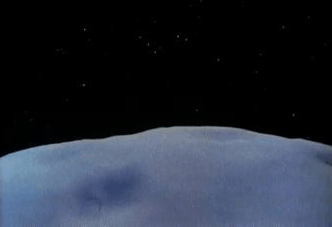
“There is not perhaps another object in the heavens that presents us with such a variety of extraordinary phenomena as the planet Saturn.”
—Sir William Herschel (1738-1822)
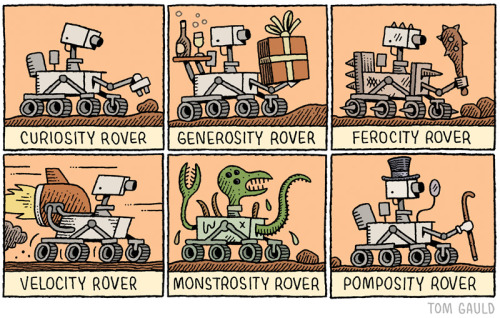





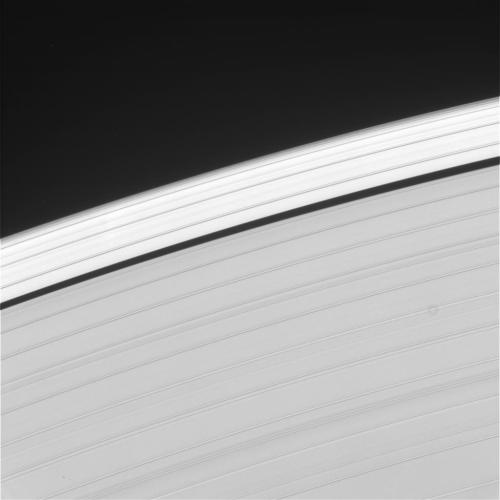




The rings of Saturn, observed by Cassini space probe, April 2016. (NASA)
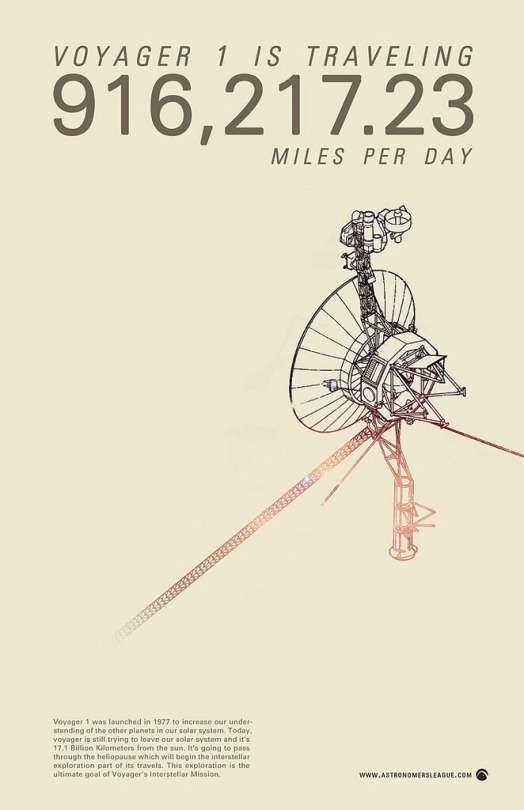
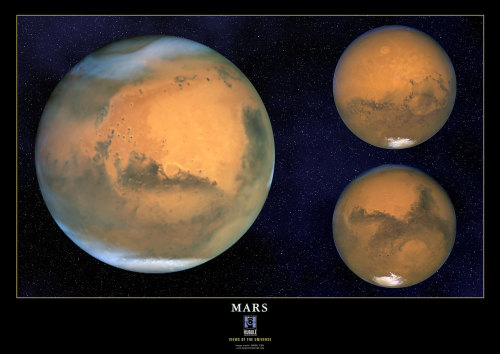
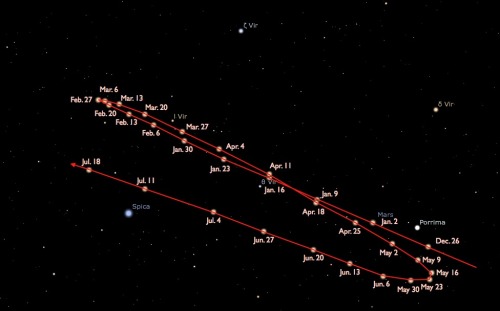
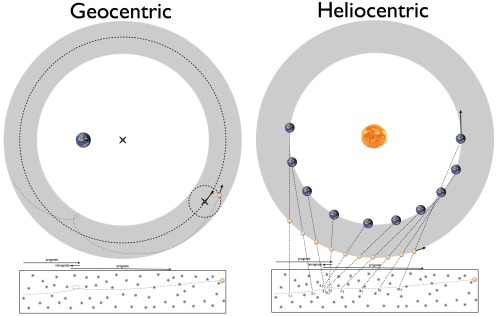
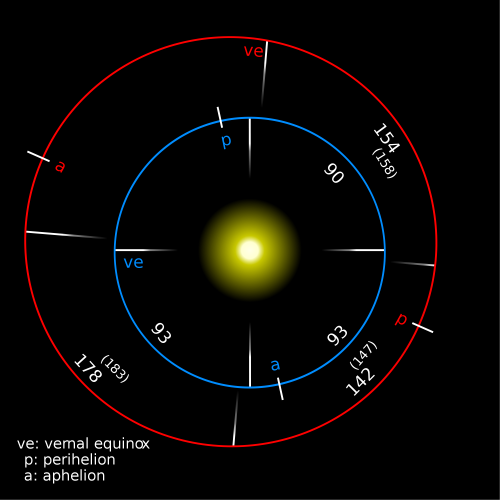
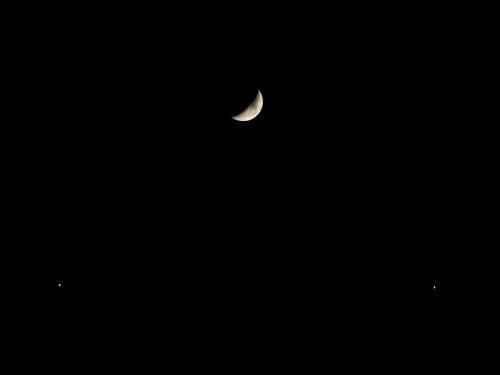
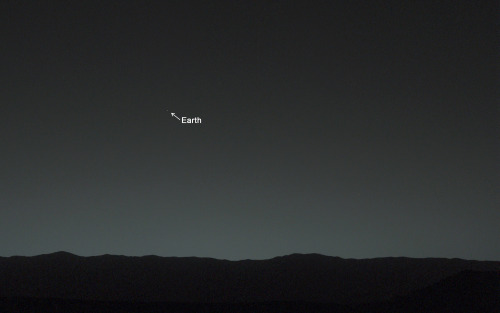
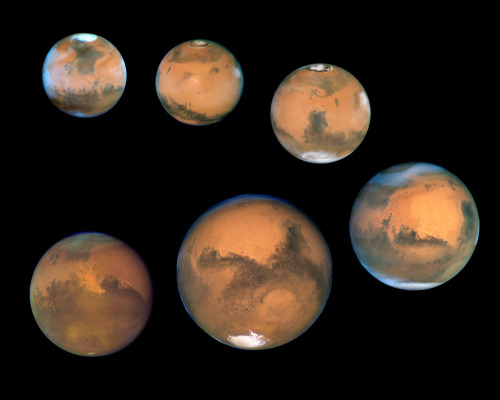
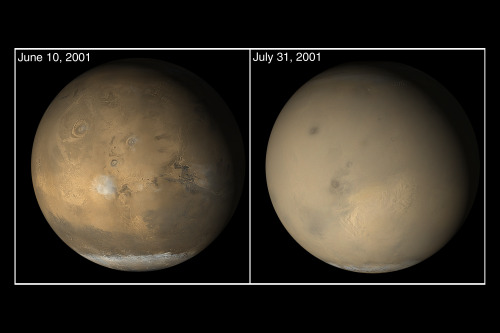
Mars gears up for its closest approach to Earth in over a decade
“Relative to the stars in the sky, planets generally move slightly towards the east from night-to-night. But beginning tonight, Mars will move to the west, commencing retrograde motion, which continues until June 30th. This isn’t due to Mars changing its motion, but rather to Earth, orbiting inner to Mars, overtaking it due to Earth’s faster path around the Sun.”
Every two years, Earth passes Mars in orbit, as the inner, faster world overtakes the outer one. This year, it happens when Earth approaches aphelion, its farthest point from the Sun, while Mars approaches perihelion, or its closest approach. On May 30th, the two worlds pass within just 0.51 A.U. (76 million km) of one another, their closest encounter since 2005. While Mars will still appear as no more than a point to unaided human vision, telescopes will provide absolutely spectacular views during the next three months. If you miss it, you’ll have to wait two years for views this good, and then you won’t get them again until 2035.
Go get the whole story – and some amazing pictures – to start your week off right!
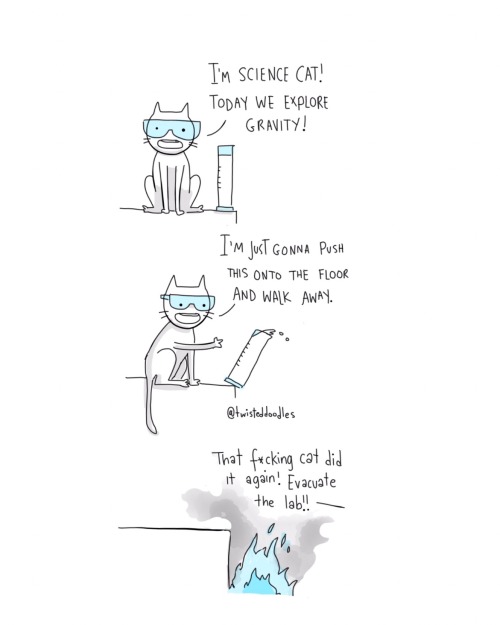
The Shakespearean Moons of Uranus
This weekend marks the 400th anniversary of Shakespeare’s death, and we’re highlighting the moons of Uranus; some of which are named after characters from his works.

While most of the moons orbiting other planets take their names from Greek mythology, Uranus’ moons are unique in bing named for Shakespearean characters, along with a couple of them being named for characters from the works of Alexander Pope.

Using the Hubble Space Telescope and improved ground-based telescopes, astronomers have discovered a total of 27 known moons around Uranus.
Here’s a sampling of some of the unique aspects of the moons:
Miranda

Shakespearean work: The Tempest
Miranda, the innermost and smallest of the five major satellites, has a surface unlike any other moon that’s been seen. It has a giant fault canyon as much as 12 times as deep as the Grand Canyon, terraced layers and surfaces that appear very old, and others that look much younger.
Ariel

Shakespearean work: The Tempest
Ariel has the brightest and possibly the youngest surface among all the moons of Uranus. It has a few large craters and many small ones, indicating that fairly recent low-impact collisions wiped out the large craters that would have been left by much earlier, bigger strikes. Intersecting valleys pitted with craters scars its surface.
Oberon

Shakespearean work: A Midsummer Night’s Dream
Oberon, the outermost of the five major moons, is old, heavily cratered and shows little signs of internal activity. Unidentified dark material appears on the floors of many of its craters.
Cordelia and Ophelia

Shakespearean works: Cordelia - King Lear; Ophelia - Hamlet
Cordelia and Ophelia are shepherd moons that keep Uranus’ thin, outermost “epsilon” ring well defined.
Between them and miranda is a swarm of eight small satellites unlike any other system of planetary moons. This region is so crowded that astronomers don’t yet understand how the little moons have managed to avoid crashing into each other. They may be shepherds for the planet’s 10 narrow rings, and scientists think there must be still more moons, interior to any known, to confine the edges of the inner rings.
Want to learn more about all of Uranus’s moons? Visit: http://solarsystem.nasa.gov/planets/uranus/moons
Check out THIS blog from our Chief Scientist Ellen Stofan, where she reflects on the life and legacy of William Shakespeare on the 400th anniversary of his death on April 23, 1616.
Make sure to follow us on Tumblr for your regular dose of space: http://nasa.tumblr.com
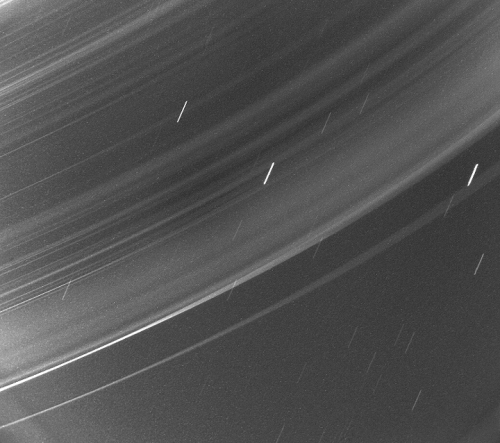
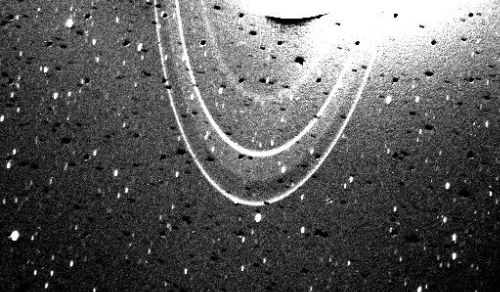

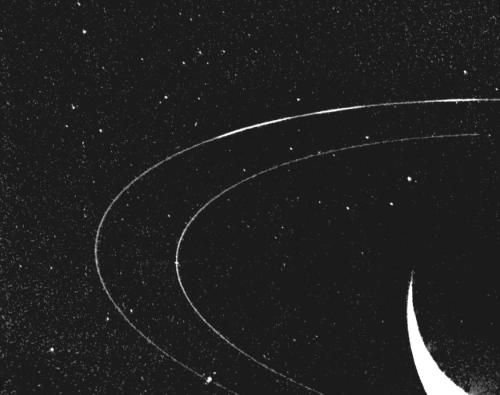
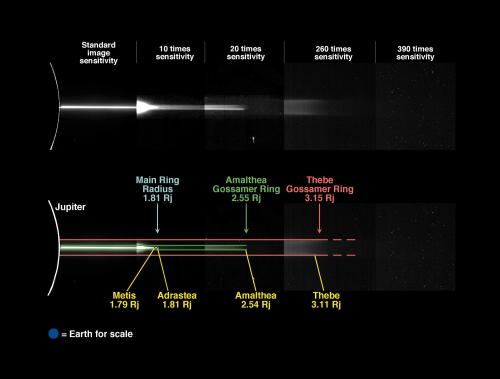
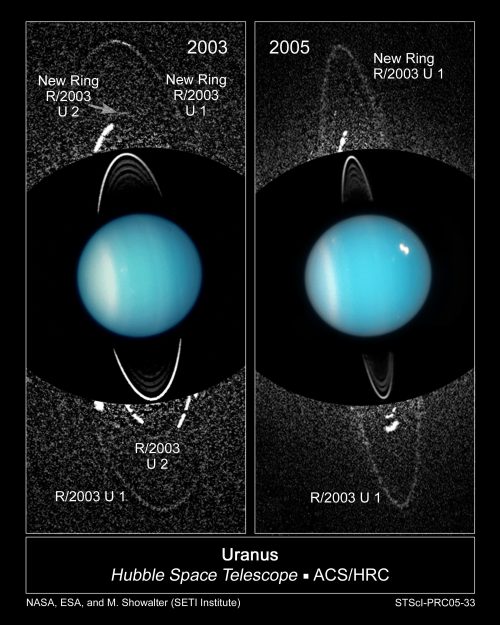
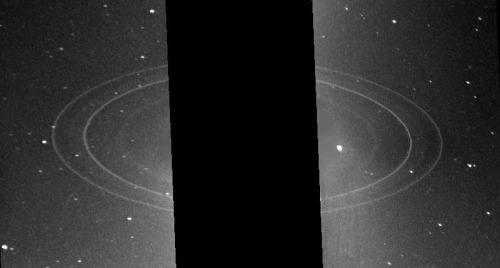
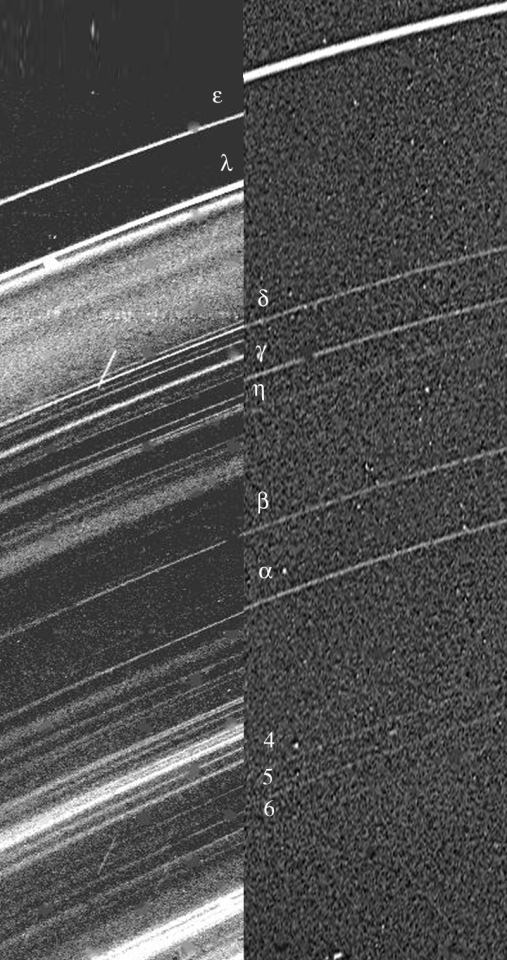
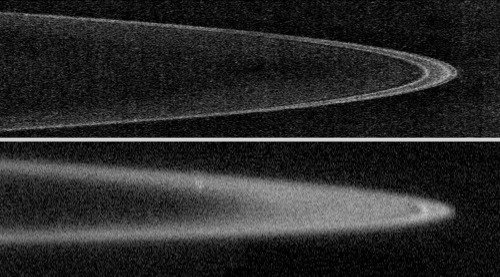

The Incredible Rings Of Uranus, Jupiter And Neptune
“It’s thought that these rings formed by organic compounds from either colliding, destroyed moons or ejecta via the extant moons. The small, innermost moons of Neptune and Jupiter shepherd their great, dusty rings. Contrariwise, Uranus’ rings simply are, consisting of mostly rocks up to 20 meters in size.”
We typically think of Saturn as our Solar System’s ringed world, thanks to its huge, glorious rings spanning nearly three times the diameter of the planet from tip-to-tip. But the other three gas giant worlds have their own impressive ring systems, with Jupiter, Uranus and Neptune boasting four, thirteen and five rings, respectively. While Neptune and Jupiter’s rings are exclusively created and shepherded by their inner, tiny moons, Uranus has a system somewhere in between those worlds and Saturn’s, having been discovered from the ground years before the Voyager spacecraft ever arrived. Go get the full story in pictures, animations and no more than 200 words on today’s Mostly Mute Monday!
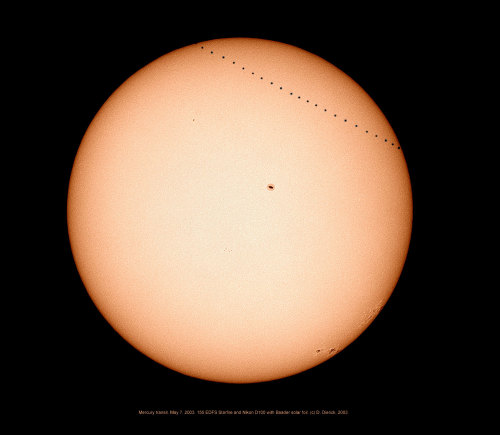
A Mercury Transit Sequence
(via APOD; Image Credit & Copyright: Dominique Dierick )
This coming Monday, Mercury will cross the face of the Sun, as seen from Earth. Called a transit, the last time this happened was in 2006. Because the plane of Mercury’s orbit is not exactly coincident with the plane of Earth’s orbit, Mercury usually appears to pass over or under the Sun. The above time-lapse sequence, superimposed on a single frame, was taken from a balcony in Belgium shows the entire transit of 2003 May 7. The solar crossing lasted over five hours, so that the above 23 images were taken roughly 15 minutes apart. The north pole of the Sun, the Earth’s orbit, and Mercury’s orbit, although all different, all occur in directions slightly above the left of the image. Near the center and on the far right, sunspots are visible. After Monday, the next transit of Mercury will occur in 2019.
Worlds That Will Make You Believe Star Wars is Real
The fantastical planets in Star Wars preceded our discovery of real planets outside our solar system…but fiction isn’t too far from the facts. When we send our spacecraft into the solar system and point our telescopes beyond, we often see things that seem taken right out of the Star Wars universe.
Is there a more perfect time than May the 4th to compare real worlds to the ones depicted in Star Wars?
Probably not…so here are a few:
Mimas

Saturn’s moon, Mimas, has become known as the “Death Star” moon because of how its 80-mile wide Herschel crater creates a resemblance to the Imperial battle station, especially when seen in this view from our Cassini spacecraft.
Kepler-452b

The most recently revealed exoplanet dubbed as Earth’s bigger, older cousin, Kepler-452b, might make a good stand-in for Coruscant — the high tech world seen in several Star Wars films whose surface is encased in a single, globe-spanning city. Kepler-452b belongs to a star system 1.5 billion years older than Earth’s! That would give any technologically adept species more than a billion-year jump ahead of us.
CoRoT-7b

At 3,600 degrees Fahrenheit, CoRoT-7B is a HOT planet. Discovered in 2010 with France’s CoRoT satellite, it’s some 480 light-years away, and has a diameter 70% larger than Earth’s, with nearly five times the mass. Possibly the boiled-down remnant of a Saturn-sized planet, its orbit is so tight that its star looms much larger in its sky than our sun appears to us, keeping its sun-facing surface molten! This scorching planet orbiting close to its star could be a good analog for planet Mustafar from Star Wars.
Kepler-16b

Luke Skywalker’s home planet, Tatooine, is said to possess a harsh, desert environment, swept by sandstorms as it roasts under the glare of twin suns. Real exoplanets in the thrall of two or more suns are even harsher! Kepler-16b was the Kepler telescope’s first discovery of a planet in a “circumbinary” orbit (a.k.a, circling both stars, as opposed to just one, in a double star system). This planet, however, is likely cold, about the size of Saturn, and gaseous, though partly composed of rock.
OGLE-2005-BLG-390

Fictional Hoth is a frozen tundra that briefly serves as a base for the hidden Rebel Alliance. It’s also the nickname of real exoplanet OGLE-2005-BLG-390, a cold super-Earth whose surface temperature clocks in at minus 364 degrees Fahrenheit.
Kepler-22b

Kepler-22b, analog to the Star Wars planet Kamino…which was the birthplace of the army of clone soldiers, is a super-Earth that could be covered in a super ocean. The jury is still out on Kepler-22b’s true nature; at 2.4 times Earth’s radius, it might even be gaseous. But if the ocean world idea turns out to be right, we can envision a physically plausible Kamino-like planet.
Gas Giants

Gas giants of all stripes populate the real exoplanet universe; in Star Wars, a gas giant called Bespin is home to a “Cloud City” actively involved in atmospheric mining. Mining the atmospheres of giant gas planets is a staple of science fiction. We too have examined the question, and found that gases such as helium-3 and hydrogen could theoretically be extracted from the atmospheres of Uranus and Neptune.
Exomoons

Endor, the forested realm of the Ewoks, orbits a gas giant. Exomoon detection is still in its infancy for scientists on Earth. However, a possible exomoon (a moon circling a distant planet) was observed in 2014 via microlensing. It will remain unconfirmed, however, since each microlensing event can be seen only once.
May the 4th be with you!
Discover more about exoplanets here: https://exoplanets.jpl.nasa.gov/
Make sure to follow us on Tumblr for your regular dose of space: http://nasa.tumblr.com
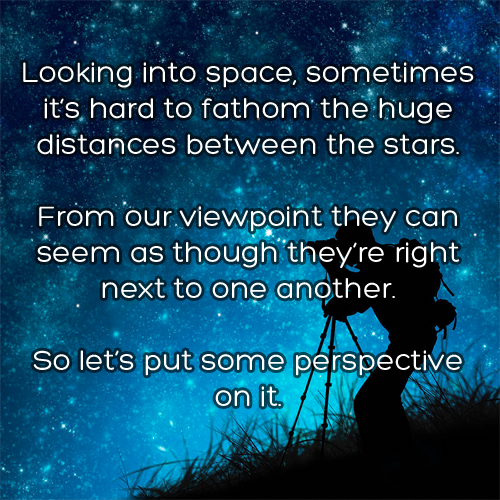
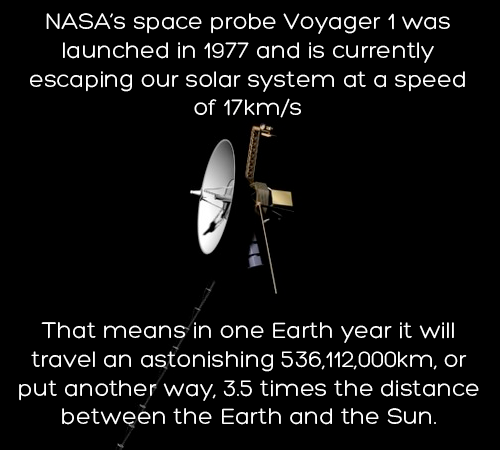
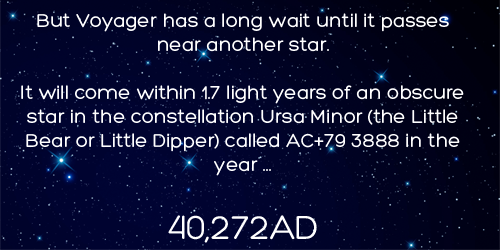
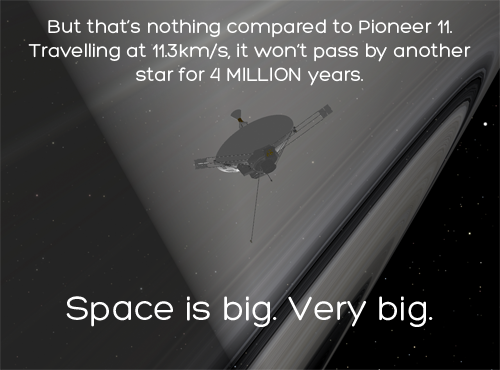

Solar System: Things to Know This Week
Here are a few things you should know about our solar system this week:
1. Gearing Up for a Grand Finale

There’s just a year left until the Cassini mission begins its Grand Finale – the final phase of its mission, during which the spacecraft will dive repeatedly between the planet and the rings. To get ready, the Cassini team has launched an enhanced, mobile device-friendly version of the mission website. The site includes information about Cassini, Saturn, the moons and the rings – but it also tells the human stories behind one of the most ambitions expeditions of all time.
2.Caught in Transit

On Monday, May 9, the planet Mercury will cross directly in front of the sun, an event that hasn’t occurred since 2006 and won’t happen again until 2019. Find out how to watch HERE.
3. A Moon for Makemake

Our Hubble Space Telescope has spotted a small, dark moon orbiting Makemake (pronounced “MAH-kay MAH-kay). Make make is the second brightest icy dwarf planet – after Pluto – in the faraway Kuiper Belt.
4. The Age of the Aquarids

The Eta Aquarid meteor shower is the first of two showers that occur each year as a result of Earth passing through dust released by Halley’s Comet. This year, it should peak on the night of May 5/6. Get tips for watching HERE.
5. The Southern Lights of Saturn

On May 4, Cassini will reach periapse, the closest point to Saturn in the spacecraft’s orbit. At about this time, Cassini’s cameras will monitor Saturn’s south polar aurorae, and also image the bright limb of the planet to better understand its upper haze layers.
Want to learn more? Read our full list of the 10 things to know this week about the solar system HERE.
Make sure to follow us on Tumblr for your regular dose of space: http://nasa.tumblr.com
On the care and keeping of your scientist
Congratulations on adopting a scientist! Regardless of their field they will require much coffee, free food, and love. Here are some field specific tips for keeping your scientist happy and healthy!
Biology: make sure they don't get overly invested in their model organism by reminding them about the flaws inherent in their system on a regular basis, but also make sure to join in when they criticize other models in favor of their own
Chemistry: don't let them do that 'just one more reaction' at 10 pm. make sure they get out of the lab and see the sun on a regular basis. try to keep them from partying too hard when they do leave the lab
Geology: humor their rock puns but don't let the lick the rocks (they will tell you they need to lick the rocks to identify them, but don't fall for it)
Astronomy: try not to let them become completely nocturnal. point out nice stars to them and look suitably impressed by their "pictures" of planets that don't look like anything to you
Physics: take them to the park on a regular basis to remind them that things larger than subatomic particles exist. bring a frisbee or a ball to play catch with and be impressed by their ability to calculate trajectories
Math: always make sure to have free batteries for their calculators and a mathmatica user guide on hand. Humor them when they tell you why space without angles is important
Ecology: make sure they remember to wear sunscreen and keep an eye on them in the field. Remind them to come inside and analyze their data occasionally
Psychology: don't mention Freud or ever call them a soft or social science, but make sure you gently remind them that social factors can impact reproducibility and try to keep them from drawing sweeping conclusions about the inherent nature of humanity
Neuroscience: be suitably impressed by their newest experiment and then remind them that people are not mice as often as possible
Computer Science: make sure they take breaks while debugging by limiting their supply of coffee. Nod and smile when they go off on indexing and arrays. Make sure they always have a rubber duck.
Make sure to keep your scientist away from engineers unless they have been properly socialized to interact in a translational household. The most important thing is to remember to hug your scientist on a regular basis and remind them that there is life outside the lab
Too funny
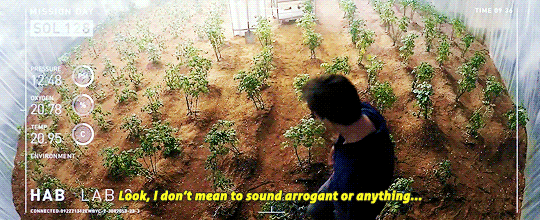
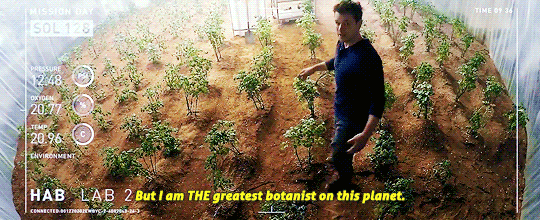
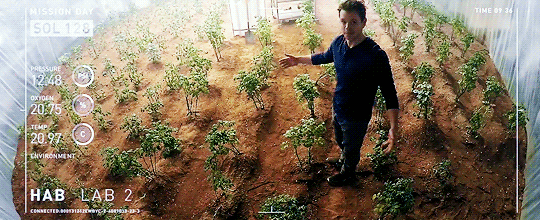
🔥

Zodiac Fire Signs | Are you following http://thezodiaccity.com?
Straight up

Zodiac Sagittarius | See much more at TheZodiacCity.com
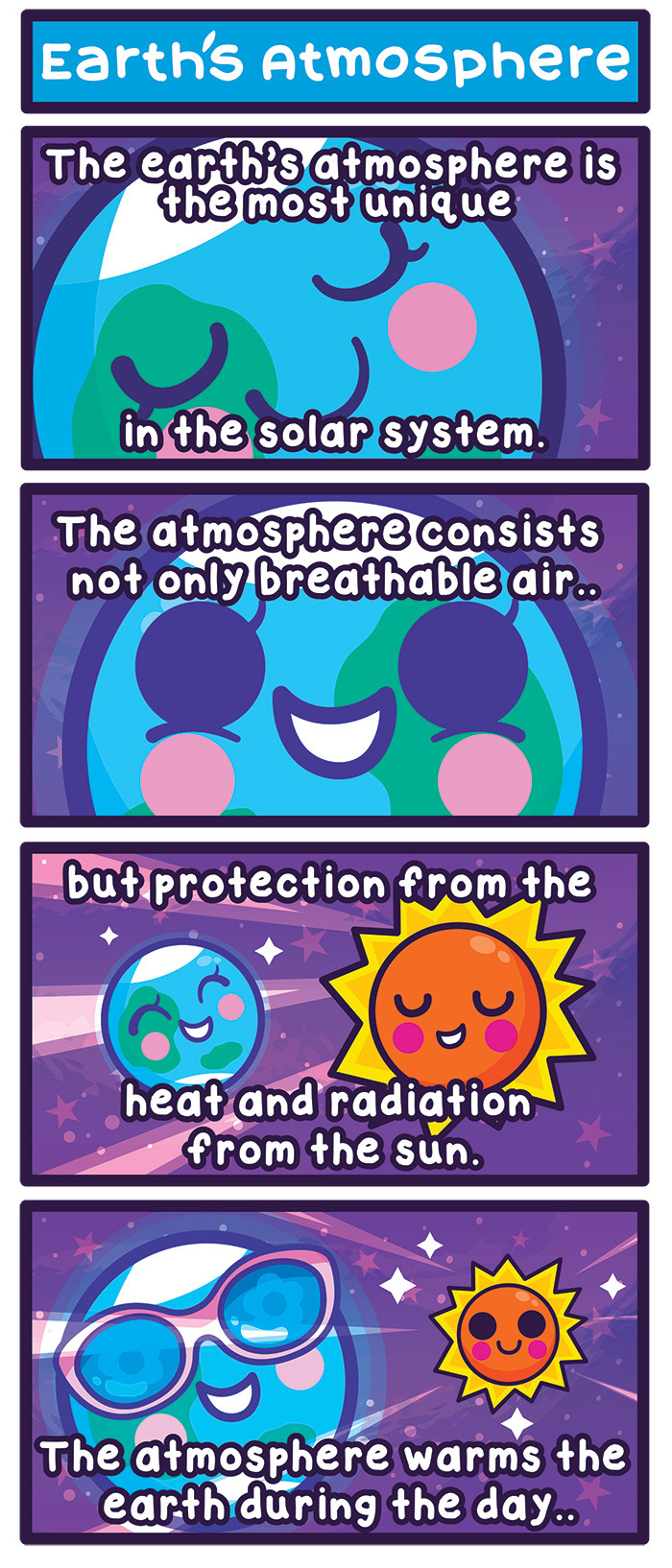
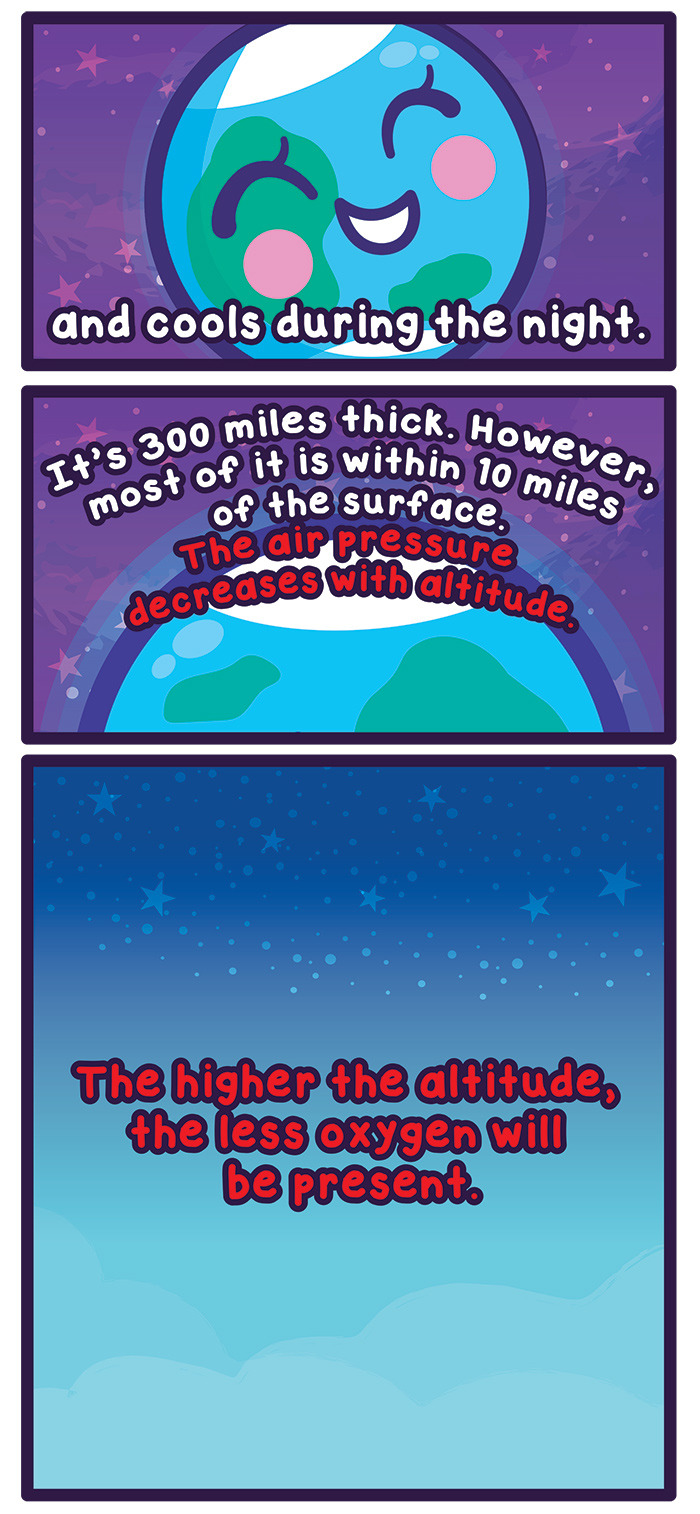
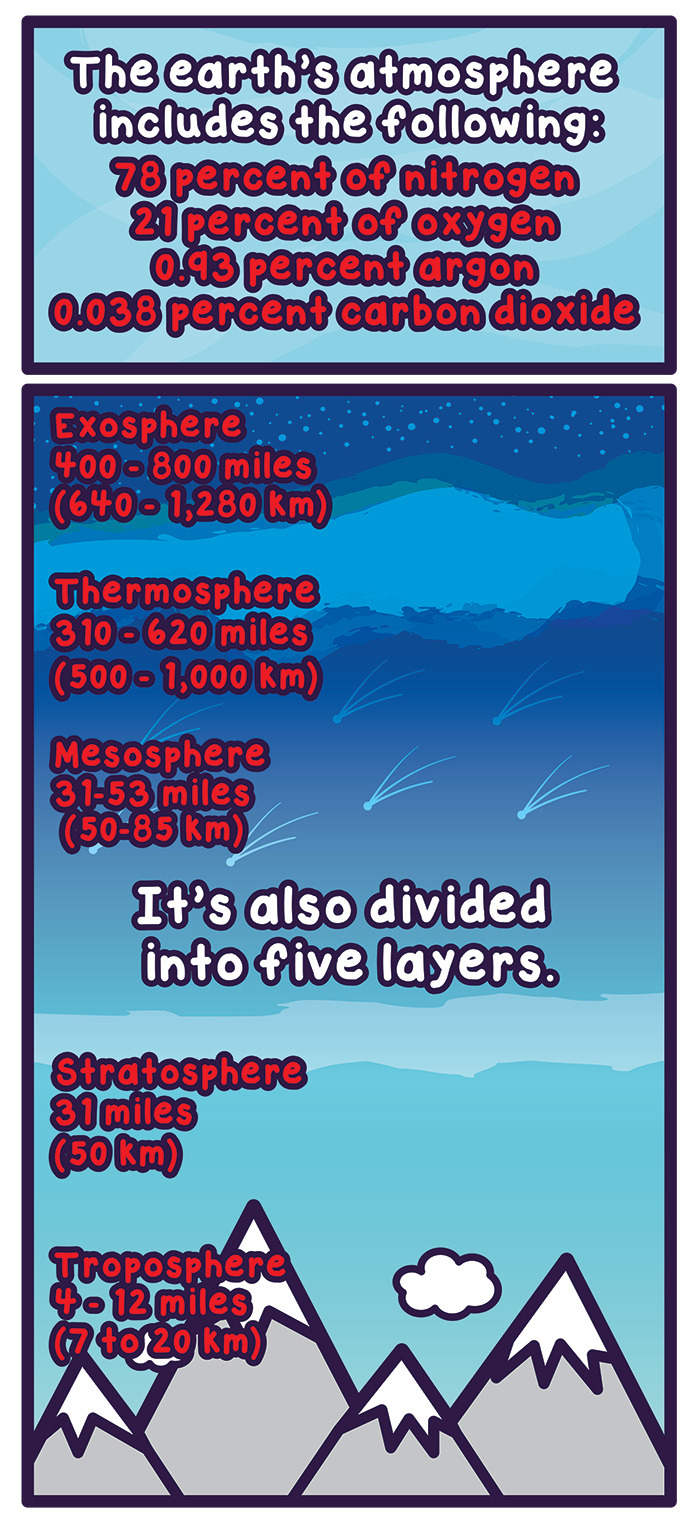
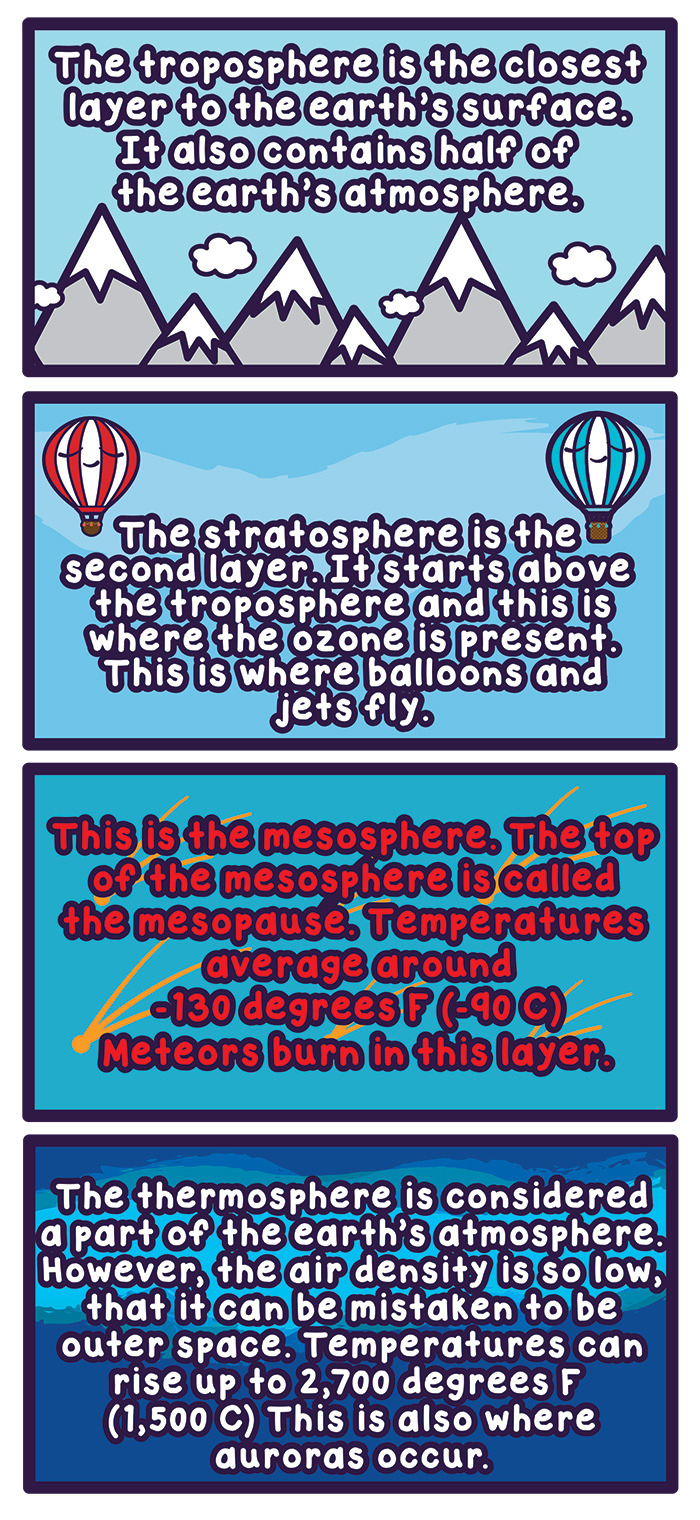
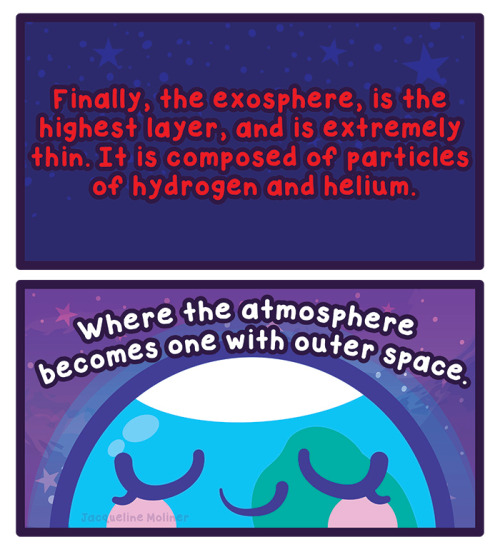
Better late than never!
This week’s entry: Earth’s Atmosphere
http://www.space.com/17683-earth-atmosphere.html
Happy Earth Day! 🌏🌍🌎
Happy Earth Day!
It’s Earth Day, and what better way to celebrate than to show you a glimpse of our various efforts to protect and understand our home planet.

We’re able to use the vantage point of space to improve our understanding of the most complex planet we’ve seen yet…EARTH! Our Earth-observing satellites, airborne research and field campaigns are designed to observe our planet’s dynamic systems – oceans, ice sheets, forests and atmosphere – and improve our ability to understand how our planet is changing.

Here are a few of our Earth campaigns that you should know about:
KORUS-AQ (Korea U.S. - Air Quality)

Our KORUS-AQ airborne science experiment taking to the field in South Korea is part of a long-term, international project to take air quality observations from space to the next level and better inform decisions on how to protect the air we breathe. Field missions like KORUS-AQ provide opportunities to test and improve the instruments using simulators that measure above and below aircraft, while helping to infer what people breathe at the surface.
This campaign will assess air quality across urban, rural and coastal South Korea using observations from aircraft, ground sites, ships and satellites to test air quality models and remote sensing methods.
NAAMES (North Atlantic Aerosols and Marine Ecosystems Study)

Our NAAMES study takes to the sea and air in order to study how the world’s largest plankton bloom gives rise to small organic particles that influence clouds and climate. This study will collect data during ship and aircraft measurement campaigns and combine the data with continuous satellite and ocean sensor readings.
IceBridge

Operation IceBridge is our survey of polar ice, and is kicking off its eighth spring Arctic campaign. This mission has gathered large volumes of data on changes in the elevation of the ice sheet and its internal structure. It’s readings of the thickness of sea ice and its snow cover have helped scientists improve forecasts for the summer melt season and have enhanced the understanding of variations in ice thickness distribution from year to year.
GPM (Global Precipitation Measurement)

GPM is an international satellite mission to provide next-generation observations of rain and snow worldwide every three hours. We launched this mission with the Japanese Aerospace Exploration Agency (JAXA) in 2014. GPM contributes to advancing our understanding of Earth’s water and energy cycles, improves forecasting of extreme events and extends current capabilities of using satellite precipitation information to directly benefit society.
Find information about all of our Earth-studying missions HERE.
Celebrate Earth Day with Us!

Want to participate in Earth Day with us? Share on social media what you’re doing to celebrate and improve our home planet. We’ll be sharing aspects of a “day in the life” of our Earth science research. Use the tag #24Seven to join the conversation. Details: http://www.nasa.gov/press-release/nasa-announces-earth-day-24seven-social-media-event
Make sure to follow us on Tumblr for your regular dose of space: http://nasa.tumblr.com
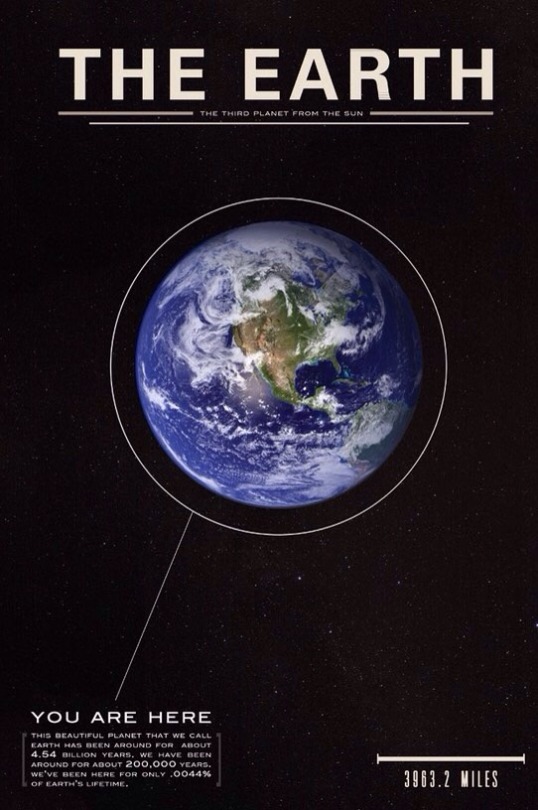
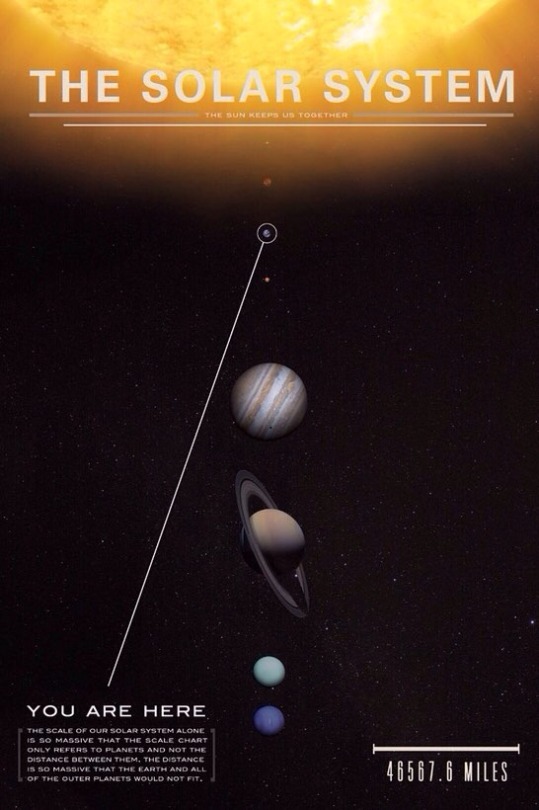
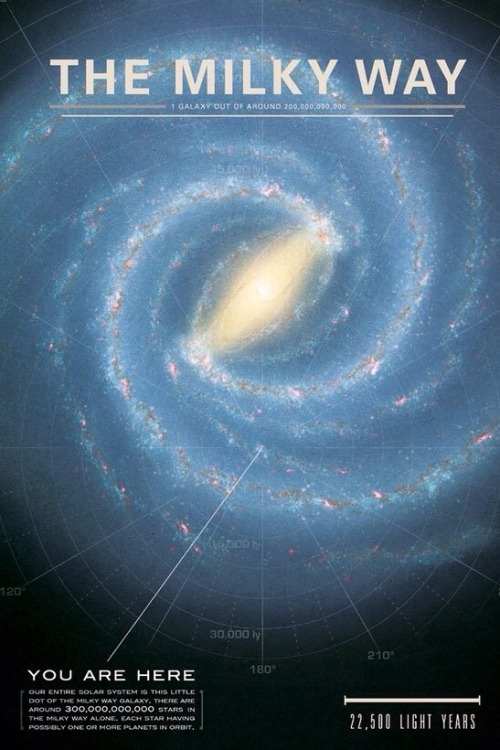
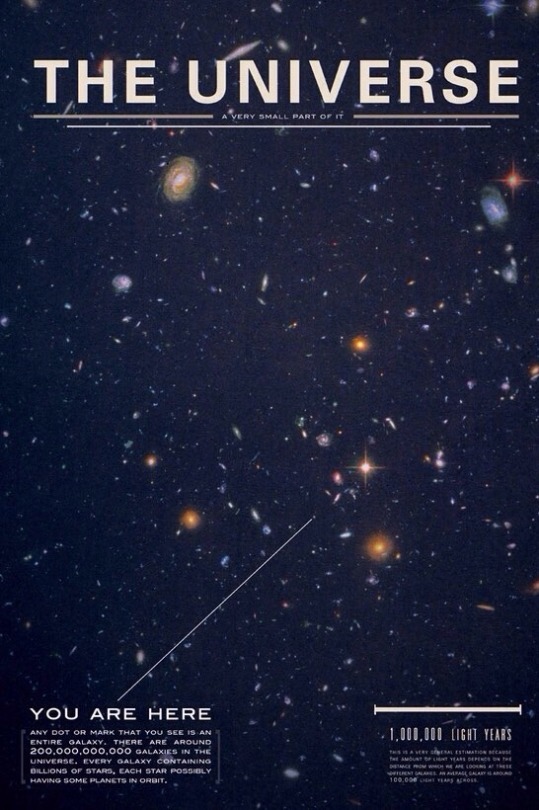
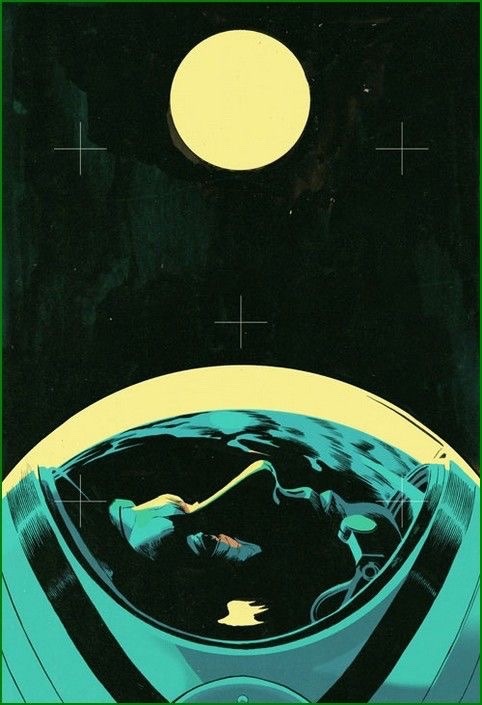
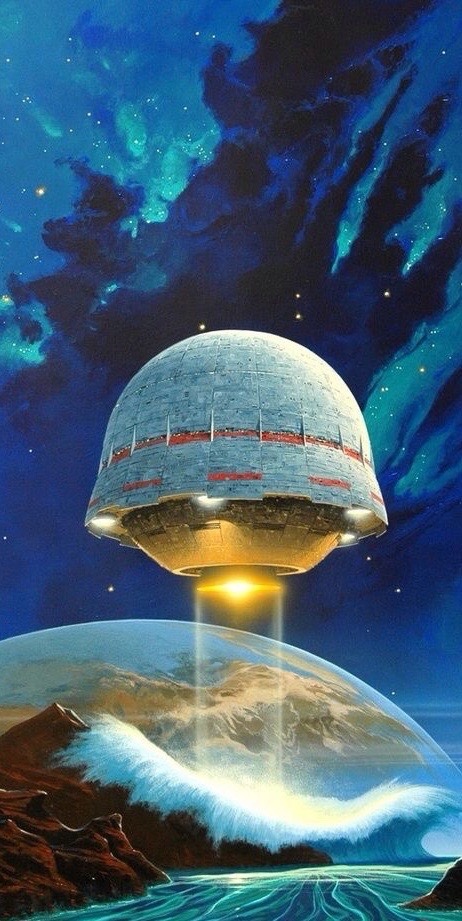
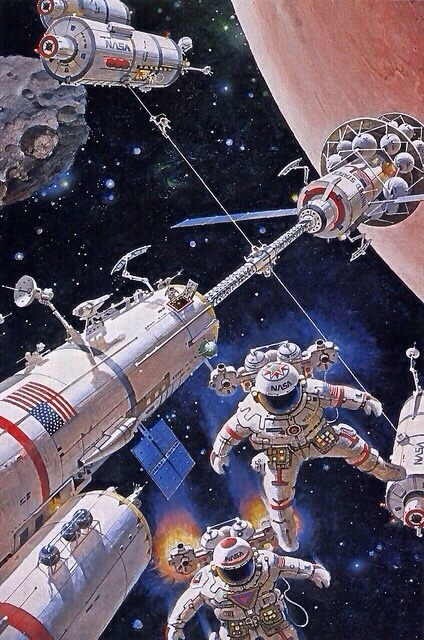

Vintage Space Album.
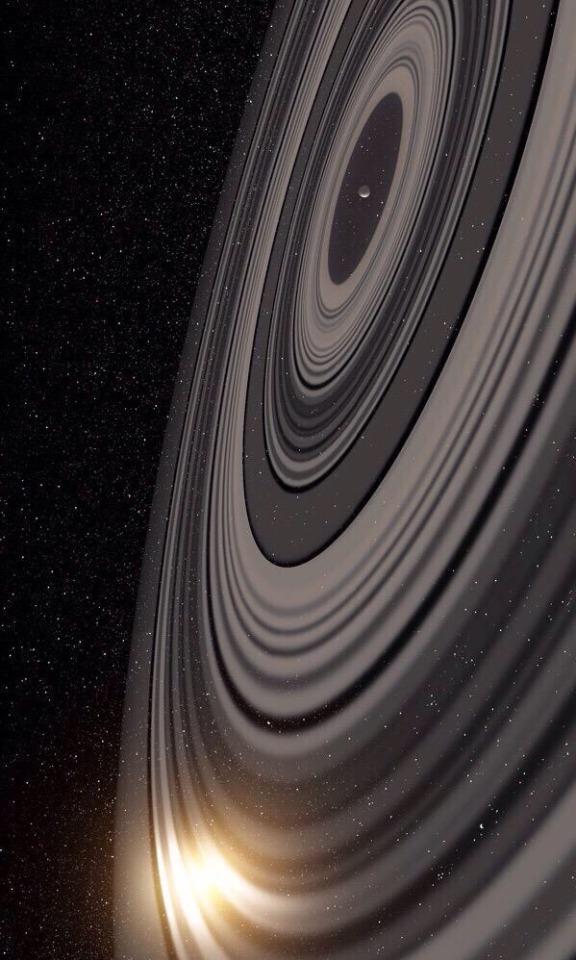
Gigantic Ring System Around J1407b Much Larger, Heavier Than Saturn’s.

Behold! The largest strip of bacon in the entire solar system!
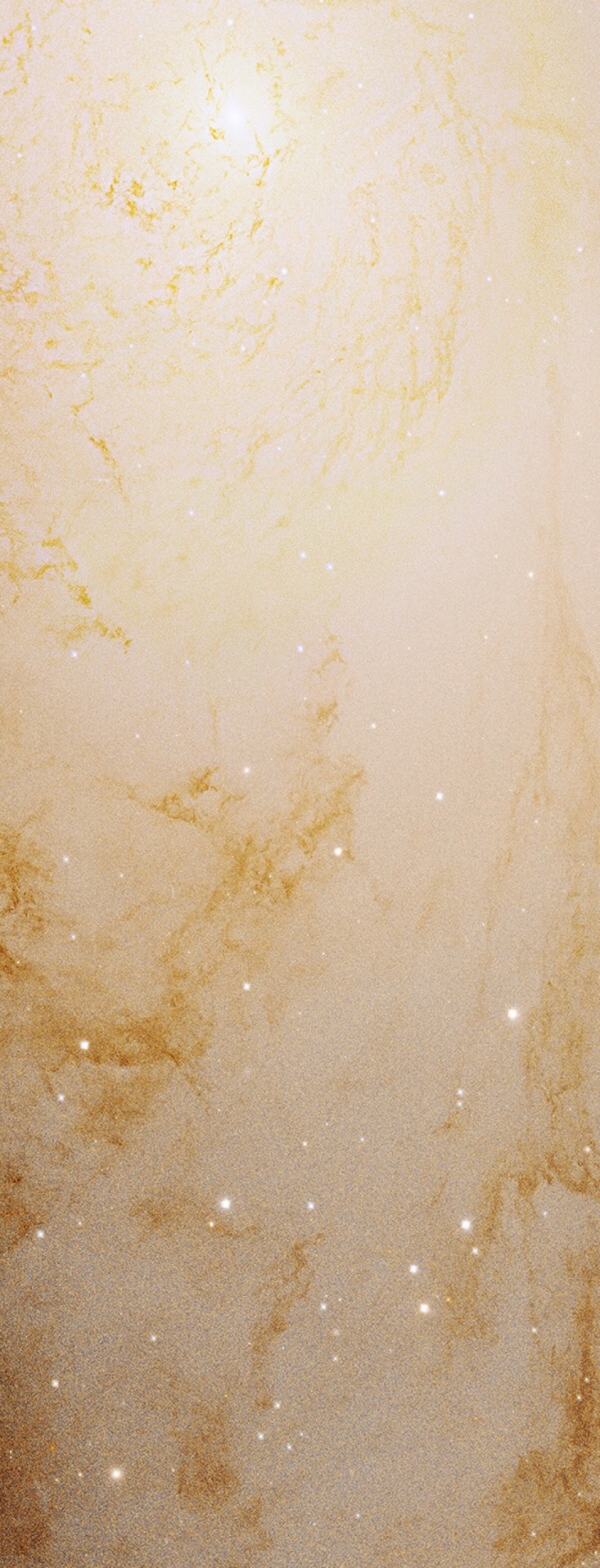
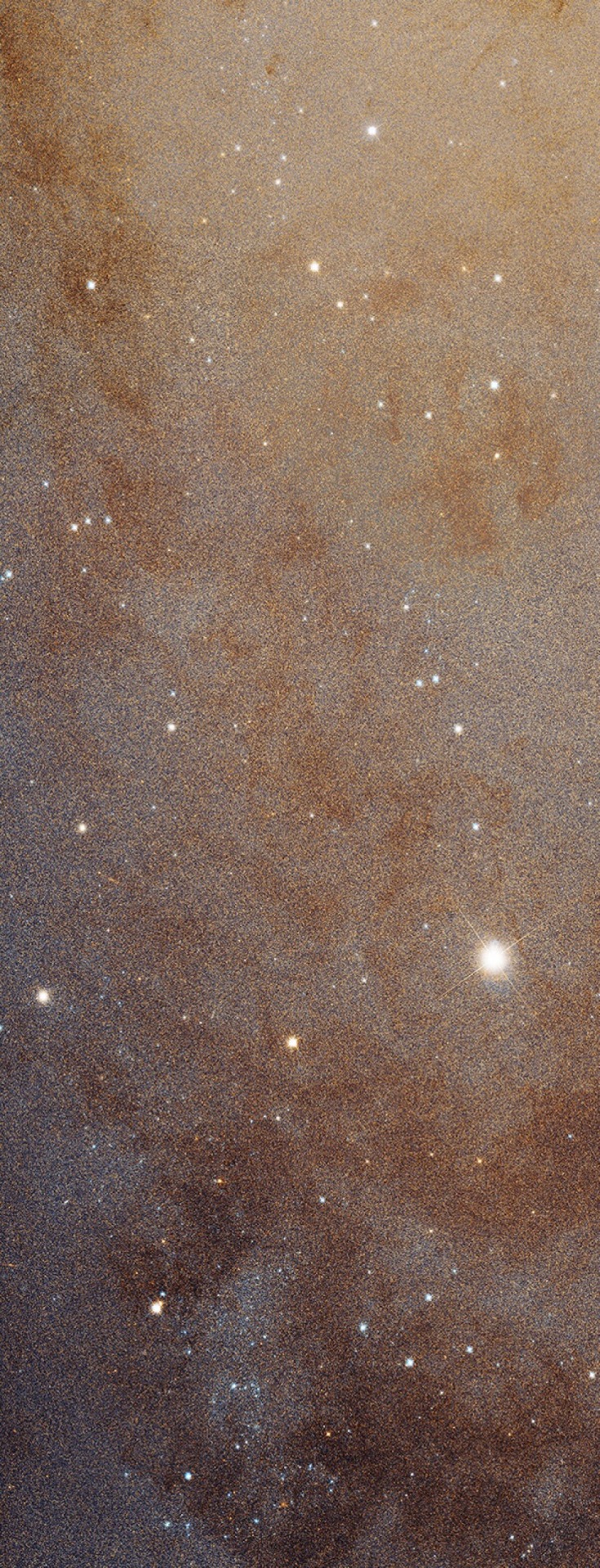
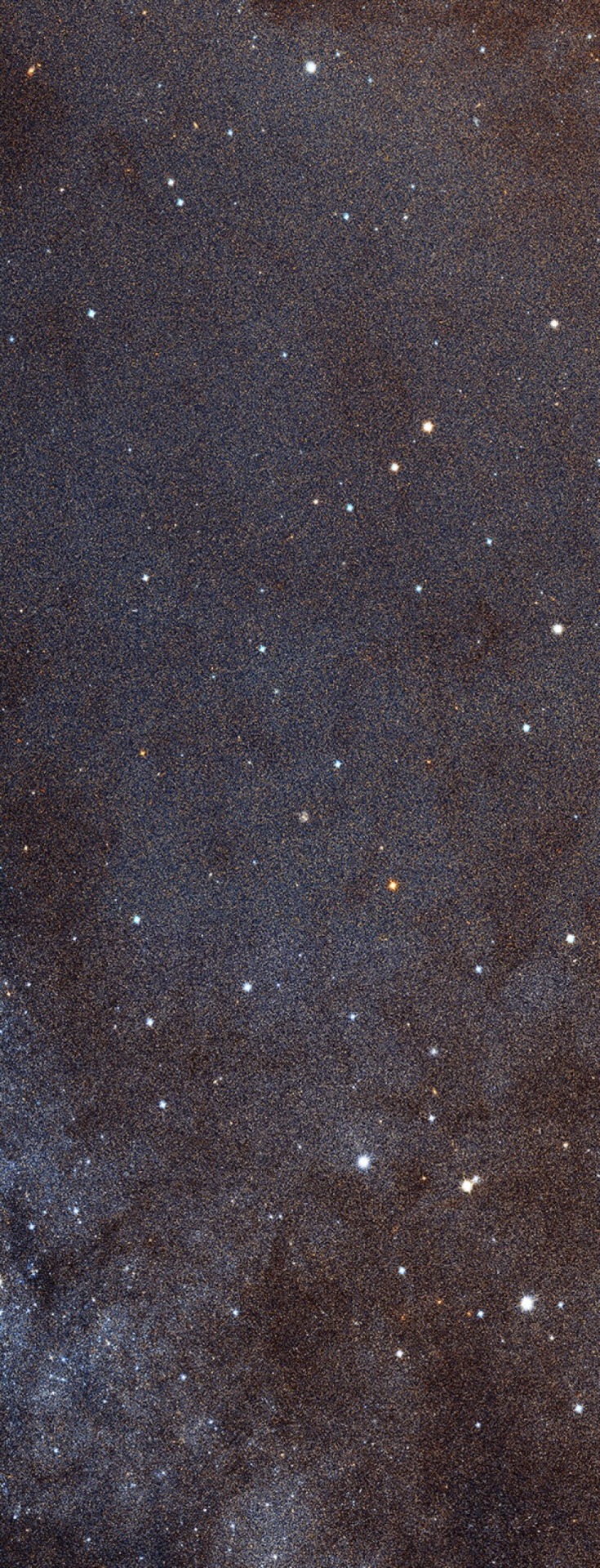
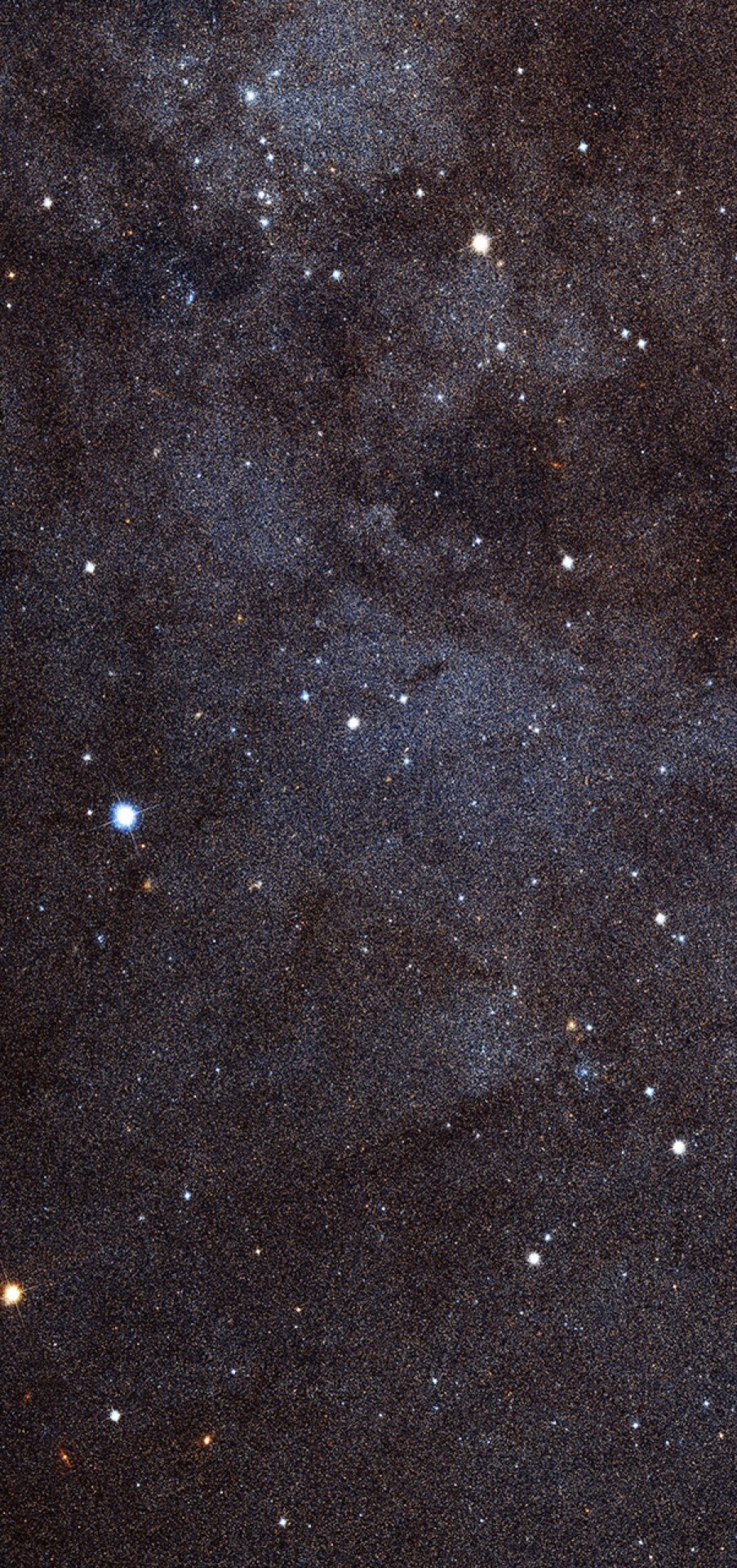
You just scrolled over a high-res segment of the Andromeda galaxy.
❤❤❤
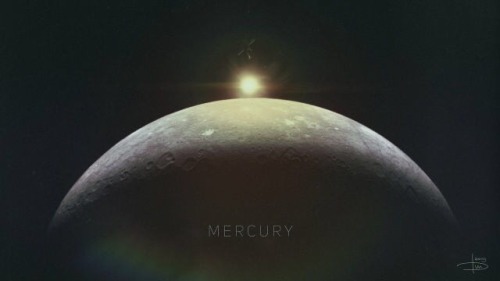
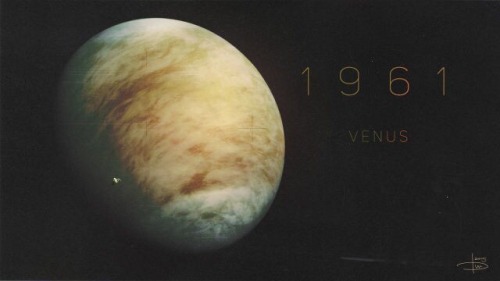
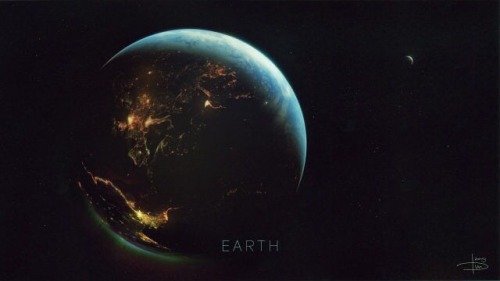
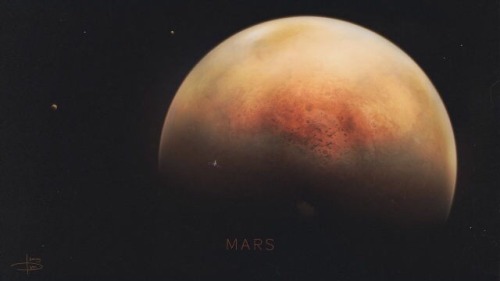
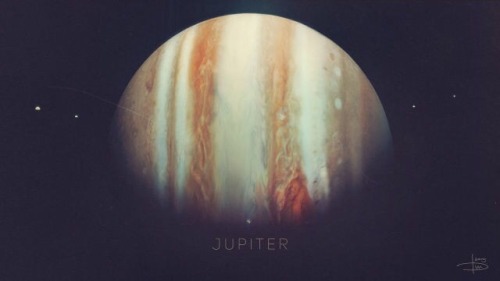
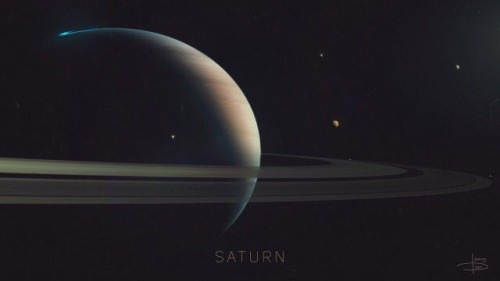
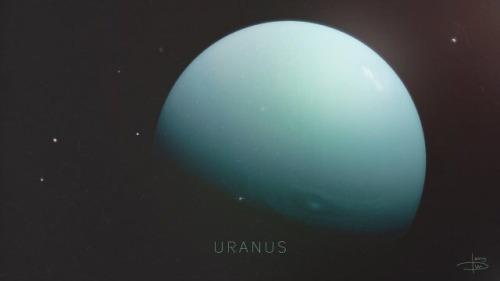
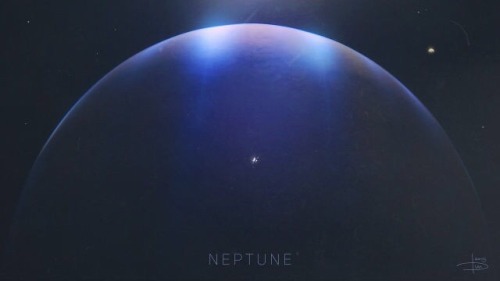

Our Solar System!
I'm super judgmental and I really don't mean to be I'm sorry!

Zodiac Signs That Are A Little More Judgmental Than They’ll Probably Admit | TheZodiacCity.com

Seriously 👊

Zodiac Sagittarius Facts | See much more at TheZodiacCity.com
Lonely Sun ☀
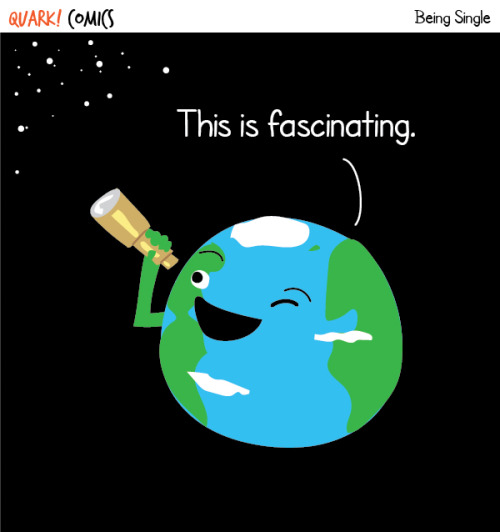
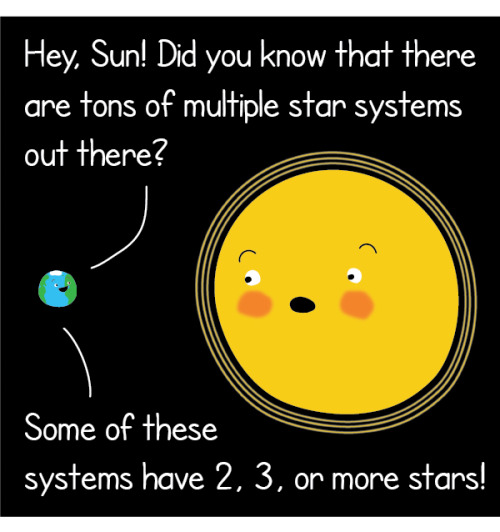
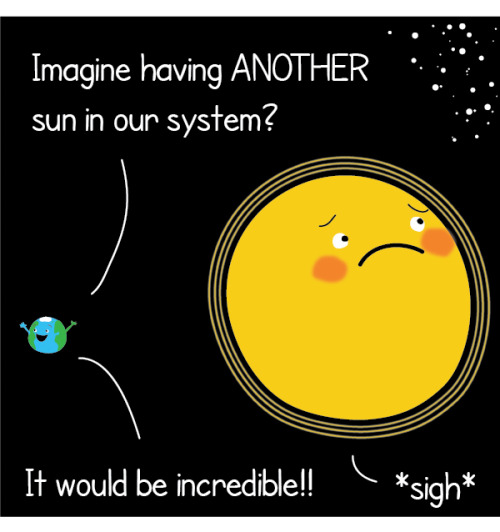
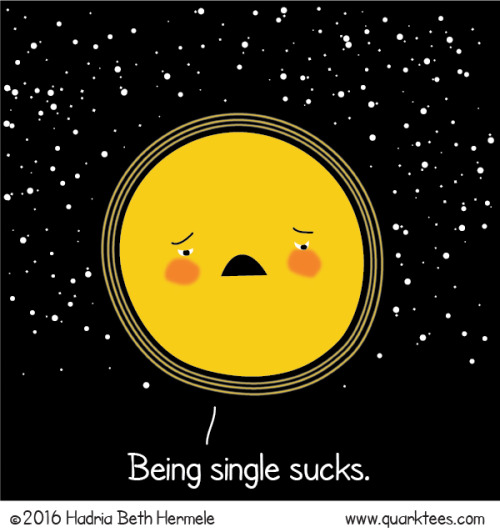
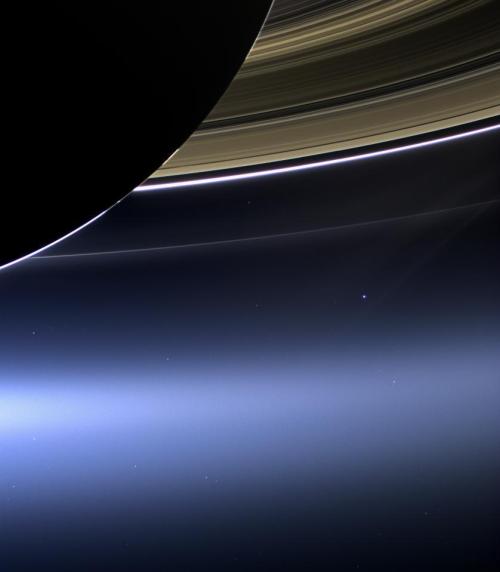
The Earth and Moon seen from Saturn
In this rare image taken on July 19, 2013, the wide-angle camera on NASA’s Cassini spacecraft has captured Saturn’s rings and our planet Earth and its Moon in the same frame.
NASA / JPL / SSI

Wonderfully smooth wagon-wheel effect from Saturn’s polar hexagon. Photographed by Cassini, 22 March 2014.